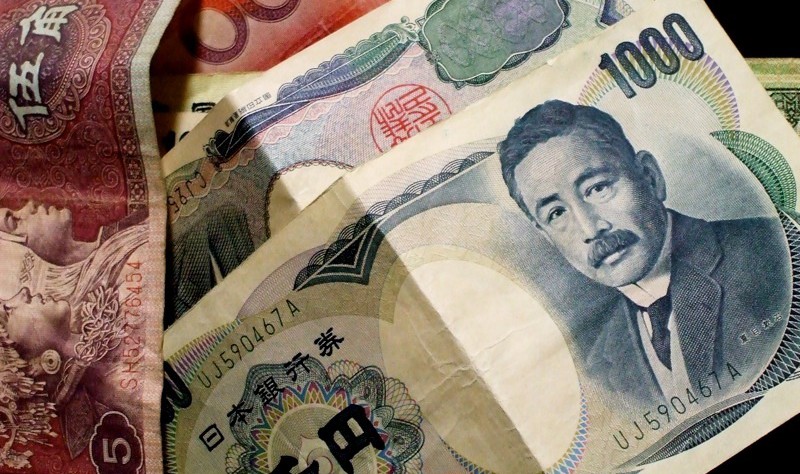It was a little over five years ago that Shinzo Abe, Japan’s 90th Prime Minister, unceremoniously resigned his post amidst government scandal. He had been at the helm of Japan’s government only a year, and, at the time of his resignation, enjoyed approval ratings of less than thirty percent. Now Mr. Abe, revived and newly-elected in September, pledges to bring to Japanese economic and foreign policy the strength he believes is necessary. It is no secret that Abe is more nationalistic than his predecessors, and in the parliamentary elections of last year he pledged a tough stance both on the ongoing dispute over the Senkaku Islands, the ownership of which has long been a source of tension between Japan and China, and a persistently deflated Japanese economy. While the territorial dispute seems to alternatively lumber and rage on, Abe’s actions in the economic realm have led many to fear his increasing control over a constitutionally separated Bank of Japan.
To address Japanese monetary policy, Abe revealed last January what has since been dubbed “Abenomics,” a strategy characterized by a two-pronged approach of controls enacted by the Bank of Japan. The central bank has set a targeted inflation rate of 2%, and committed to “open-ended purchases,” a process similar in type to the quantitative easing now common in U.S. Federal Reserve policy. Starting in January of 2014, the Bank of Japan will begin buying back, for an indefinite period of time, 13 trillion Yen ($145 billion) a month in government bonds.
In the past two months, the Yen has fallen nearly 13% against the dollar. In January, it hit a 2 ½ year low, and such depreciation of the Yen, no doubt tied to Abe and the Bank of Japan’s new proposed policies, has led many to talk of “currency wars,” or a surge of competitive devaluations enacted by central banks aimed at achieving low exchange rates and export driven growth. At a press conference in Washington several weeks ago the Managing Director of the IMF, Christine Lagarde, stated “there are multiple ways to improve competitiveness, other than to use currencies as a tool,” echoing calls by Russian and German finance ministers that Japan is pursuing a “ beggar-thy-neighbor” policy, or one that brings down other economies in order to grow.
Whether Japan is initiating a collective competitive devaluation or not, their new economic policies are undeniably clear in their effect: to devalue the Yen. Japan has long been the most developed of the East Asian countries, and grew into such development under the constant and careful gaze of its great trading partner across the Pacific. Surrounded by the ever increasing power of emerging markets, it is fitting that now more than ever they seem to echo the U.S. with a monetary policy designed to stave off what is, perhaps, an inevitable decline. Yet such a policy may further a descent into economic torpor, not stop it. There are hazards which Japan, if it continues on its planned course, will not be able to avoid. A ballooning debt will go hand in hand with what is, essentially, the unlimited printing of money – Lagarde noted in the same press conference that without any “determination to change the debt trajectory, and reduce the deficit,” she didn’t believe Japan’s strategy to be “particularly appropriate.” With such a monetary strategy comes, too, a danger of inflation, and though a depreciation of the Yen is the intended consequence of the Bank of Japan’s policies, easing still represents a dangerous step down a possible path of no return. Both investor Jimmy Rogers and journalist Matt Taibi, among others, have spoken of such a danger, particularly when it comes to an exit of the easing process. Their arguments concern U.S. Federal Reserve practices, but can easily apply to those of the Bank of Japan.
It is worth noting that this is not the first time Japan has enacted easing policies designed to combat deflation. The Bank of Japan was the pioneer of the process: from 2001 to 2006, it increased their monetary base by nearly 50 trillion Yen. Now, seven years on and still trying to fight their way out of what they call A Lost Twenty Years, the Japanese are turning to the same tactic that many acknowledge to have been a failure. Is there any reason to think it would work this time around? At the worst, we might find an impatient group of Japanese bureaucrats calling for more and more central bank purchases, resulting in an even deeper trip down the rabbit hole (something the United States knows all too well.)
Now more than ever Japan stands in stark contrast the developing nations of Asia. China welcomes Xi Jinping and the chance to put a new face at the head of the world’s second largest economy. Korean unification again seems to be a possibility, at least for the moment, under Kim Jong-un. Though we do not know whether Jingping and Jong-un represent change, we do know that there is the possibility for it. In Japan, however, the central bank’s aggressive monetary policies likely represent more of the same, and with disastrous consequences – at least Jim certainly thinks so.
